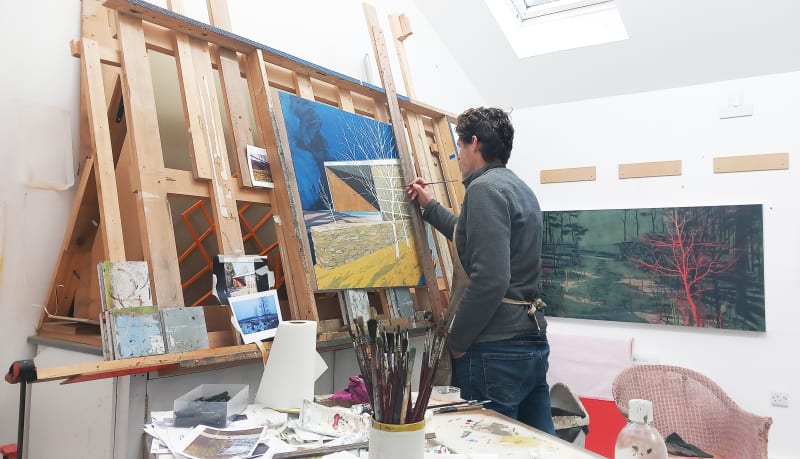Andrew Mackenzie is a painter whose work mines a territory between abstraction and representation. His work responds to relationships between landscape and the built environment, focusing often on rivers, reservoirs, tree forms, the edges of fields, car parks and roads, combined with diagrammatic suggestions of manmade structures or open frameworks. These structures are sometimes invented but more often take their starting point from observed buildings or other objects encountered on walks around his home in the Scottish Borders. Walking is a central part of Mackenzie’s practice for generating ideas, supported by notes, sketches, and photography.
From these initial responses, the work develops in the studio through an open-ended process of adding and removing paint or charcoal, repeatedly working over the surface with patterns of lines, dots, and dashes. Through this layered approach—combining surface, detailed subject matter, and mark making—the artist seeks to evoke a sense of looking both back and forward in time simultaneously. Human and non-human forms are presented as entangled, overlapping, and inextricably linked. Rather than depicting opposition, the work offers a personal vision of a sympathetic and sensitive relationship—a symbiotic co-existence—expressed through a formal tension between surface, line, and colour.
He often uses objects, structures, and places as signifiers, reappropriating them from one context to another and transforming their function.
Mackenzie was born in Banff, North East Scotland, and graduated with an MFA from Edinburgh College of Art in 1993. He has received several research and development awards, and has works in many collections, including The Fleming Collection, Marchmont House and The University of Edinburgh. He has extensive experience in arts education and lecturing, with many schools and institutions, including the National Galleries of Scotland. He now lives and works in the Scottish Borders from his home studio.
